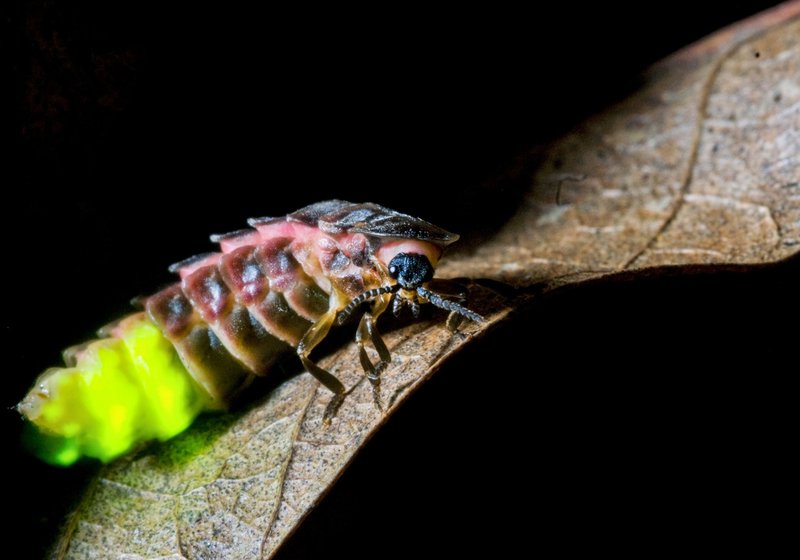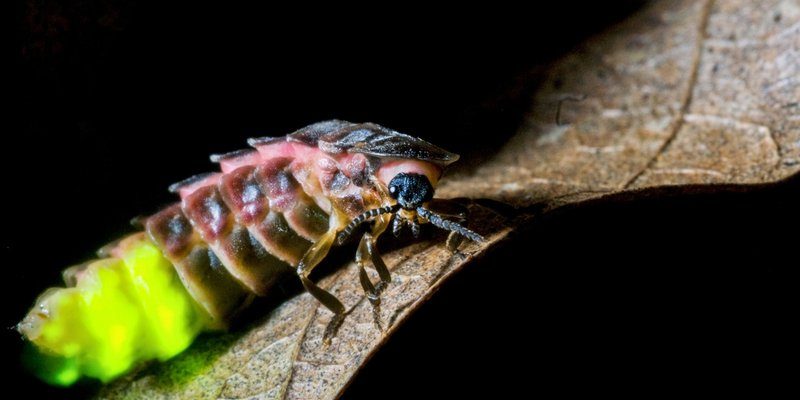
Staying with the theme of magic, keeping glow worms is somewhat like trying to bottle starlight. It’s tricky and requires a lot of consideration. You might think of glow worms as just another pretty insect, but there’s a lot more beneath the surface. Let’s dive into whether or not glow worms can be kept as pets and what’s involved in making their new home just right.
Understanding Glow Worms: Not Your Average Bug
Before we get into the nitty-gritty of keeping glow worms in captivity, it’s important to understand what they are. Glow worms, typically the larvae of certain species of beetles, are known for their bioluminescent properties—essentially, they light up! This glowing effect helps them attract prey, which mostly consists of insects that get stuck in their silk threads.
Here’s the thing: not all glow worms are the same. The most common types come from the *Lampyridae* family, and they create that enchanting glow we all love. They thrive in specific environments, often found in damp, dark places where humidity is high. So, if you’re thinking about keeping them, you’ll need to replicate their natural habitat as closely as possible.
Creating the Ideal Environment
So, how do you create an environment that makes glow worms feel at home? Honestly, it’s all about temperature and humidity. Glow worms need a warm, moist setting to thrive. If you live in a dry area, you’ll need to be proactive about maintaining those conditions.
To set up their home, consider a terrarium or a clear enclosure with good air circulation. Here are some key factors you’ll want to focus on:
- Temperature: Glow worms prefer temperatures between 70°F and 80°F (21°C to 27°C).
- Humidity: You’ll need to keep the humidity level around 70-90%. A simple humidity gauge can help you monitor this.
- Substrate: Use moist soil or damp moss as bedding. This helps maintain humidity levels.
The beauty of setting up a terrarium is that it can be a fun project. You can add plants, small rocks, and even twigs to mimic their natural habitat. Just make sure the decor doesn’t overshadow the glow worms!
Feeding Your Glow Worms
You might be wondering, “What do glow worms eat in captivity?” Great question! In the wild, they catch insects that get caught in their silk threads. In captivity, you can mimic this by offering them a diet of small insects like fruit flies or pinhead crickets.
To keep feeding simple:
- Fruit flies: These are tiny and easy to raise, making them a perfect food source.
- Pinhead crickets: Just small enough for glow worms to tackle.
- Freshness: Always offer fresh food. Removing uneaten insects helps maintain a clean environment.
Feeding is crucial because it helps your glow worms grow and glow brighter! Plus, watching them hunt can be quite an experience.
Breeding Glow Worms: A Challenge
If keeping glow worms as pets sounds appealing, you might be eager to take it a step further and think about breeding them. Here’s where things get complicated. Breeding glow worms in captivity is challenging and not as straightforward as it might seem.
For one, glow worms have specific mating rituals that might be tough to recreate outside their natural environment. Even if you manage to pair them successfully, you’ll need to provide optimal conditions for their larvae to survive. The following factors are critical:
- Temperature and humidity: As mentioned, these need to stay consistent for breeding to occur.
- Space: Ensure there’s enough room for them to feel safe and secure while mating.
- Food supply: A reliable food source is key, especially for newly hatched larvae.
While it’s possible to breed them, many enthusiasts prefer to enjoy glow worms in their adult stage, appreciating them for their beauty without diving into the complexities of reproduction.
Common Issues in Captivity
Keeping glow worms isn’t without its challenges. You might face a few bumps along the way. Here are some common problems:
- Humidity fluctuations: If it gets too dry, your glow worms may not thrive. A misting system can help keep humidity levels steady.
- Pests: Sadly, other insects can invade your glow worm habitat. Regularly check for unwanted critters and maintain cleanliness.
- Lighting conditions: Glow worms need darkness to thrive; bright lights can stress them out. Use dim lighting or keep their enclosure in a dark space.
By being aware of these potential issues, you can take proactive steps to ensure your glow worms stay healthy and happy.
Ultimately, the decision to keep glow worms in captivity comes down to your commitment and curiosity. While it can be a rewarding experience, it requires careful planning and consistent care. If you’re willing to put in the effort to create a suitable environment, feed them responsibly, and tackle any challenges that arise, you might just find yourself enchanted by these glowing creatures.
Glow worms offer a glimpse into nature’s wonders and can be quite the conversation starters. So, if you’re intrigued and up for the challenge, go ahead and bring a little bit of that starry magic into your home!

